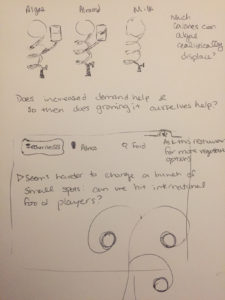Updates
I met with NYU professor David Kanter last week and had a very helpful discussion. His work is focused on the nitrogen cycle, but nitrogen and phosphorus have a close relationship given their role as fertilizers. One important difference is nitrogen is renewable and phosphorus is not. He pointed me to the Planetary Boundaries update supplementary materials to learn more about how the boundaries are defined–but apparently for nitrogen they were set somewhat arbitrarily initially and have since been tested and adjusted.
He suggested a number of areas where change or improvement could reduce nutrient pollution and carbon emissions. I included these in my final presentation, but they are broadly split between consumer behavior changes and technological advances in farming. We discussed the benefits of individual changes versus focuses on larger systemic change, but really it comes down to: individual change (vegetarianism, for example) is important but not sufficient.
It was good for me to return back to the original idea of limits to growth (30-year update) to link the research I’d done about phosphorus back to the big picture–how we’re unsustainably exhausting many planetary boundaries.
I heard back from another expert and sent along some questions, but haven’t yet heard back. In the meantime, I’ve come across many other algae projects, articles, and companies [and their sustainability assessments]. I am meeting with Stefani Bardin this week to discuss ways I can experiment with algae to test out my project idea.
My article citations have also been updated.

Some useful & some abandoned sketches
Waste systems
While my project proposal went in a different direction, I’ve generally been very curious about how we might better capture and recycle waste. I came across a project where someone went to great lengths to install a waste recycling system in their home: by adding many small red worms to a biosolids tank they were able to produce soil. I wonder if something like this could be more easily installed in homes with septic tanks? There were also several projects out of Maker Faire Africa a few years ago that focused on human waste repurposing.
One contact that Kanter suggsted was Will Brownlie at the Center for Ecology and Hydrology in England. I haven’t yet contacted him but his thesis work was on “Assessing the role of domestic phosphorus emissions in the human phosphorus footprint” so he would likely be a useful expert if I continue to work in this direction.
I also learned that NYC has a biosolids management program.